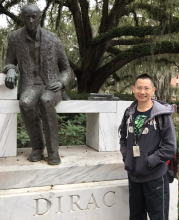gaussian
There are no Mentorships associated with this topic. View All Mentorships.
Affinity Groups
There are no Affinity Groups associated with this topic. View All Affinity Groups.
Announcements
There are no announcements with this tag. View All Announcements.
Upcoming Events & Trainings
No events or trainings are currently scheduled.
Topics from Ask.CI
Knowledge Base Resources
There are no Resources associated with this topic. View All Resources.
People with Expertise
Jacob Fosso Tande
North Carolina State University
Programs
ACCESS CSSN, Campus Champions, CCMNet
Roles
researcher/educator, research computing facilitator, Affinity Group Leader, Consultant, CCMNet

Expertise
Justin Oelgoetz
Austin Peay State University
Programs
Campus Champions, CCMNet
Roles
mentor, researcher/educator, research computing facilitator, CCMNet

Expertise
Yu-Chieh Chi
University of California, Santa Barbara
Programs
Campus Champions
Roles
researcher/educator, research computing facilitator, research software engineer

Expertise
People with Interest
Widodo Samyono
Jarvis Christian College
Programs
Campus Champions, CCMNet
Roles
researcher/educator, research computing facilitator, CCMNet

Interests
Arun Sharma
California State University-Monterey Bay
Programs
Campus Champions
Roles
mentor, research computing facilitator

Interests
Jonathan Lyon
Murray State University
Programs
At-Large, Campus Champions, Kentucky, ACCESS CSSN
Roles
mentor, researcher/educator, cssn
